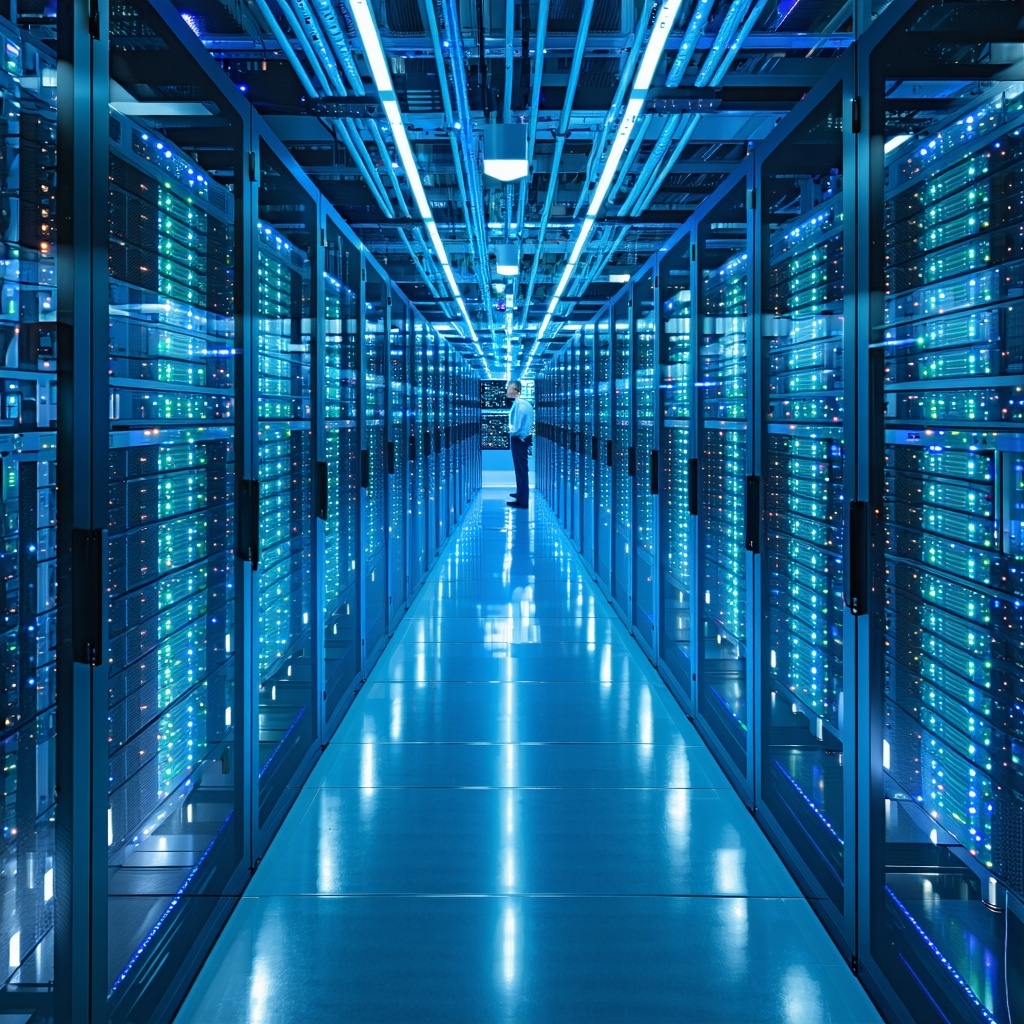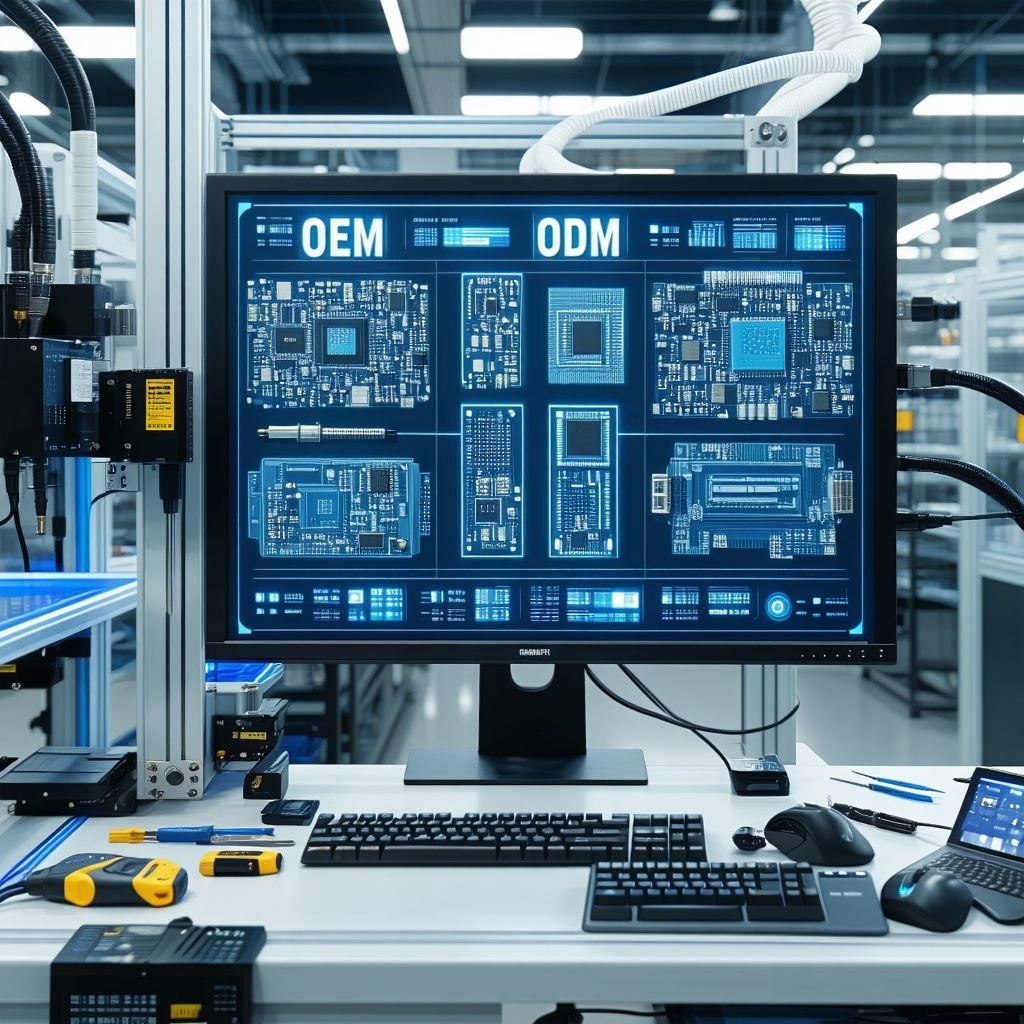Benefits of Fiber Optic Cable for Large Networks: The Smartest Upgrade You’ll Make This Year
In modern business, a powerful and dependable network forms the backbone of daily operations and success. As information demands multiply, many...
9 min read
 Tony Ridzyowski
:
Updated on July 28, 2025
Tony Ridzyowski
:
Updated on July 28, 2025
Choosing the right foundation for your network infrastructure is a pivotal decision. At the heart of this choice lie two primary contenders: fiber optic cables and traditional copper cables. Each cable type serves as a conduit for data, yet they operate on fundamentally different principles. Selecting the appropriate cable, whether fiber or copper, profoundly impacts your network's performance capabilities today, its capacity to scale for future demands, and the overall cost-effectiveness of your technology investment. Making an informed cable choice is critical for any organization planning a new build or a significant network upgrade.
While both copper and fiber optic cables are designed for data transmission, their core technologies, performance ceilings, and ideal deployment scenarios vary considerably. Fiber optic cable transmits data using light pulses through thin glass strands, whereas copper cable relies on electrical signals traversing copper wires.
Understanding the difference between copper and fiber involves looking closely at key factors such as transmission speed, available bandwidth, effective distance, reliability against interference, physical durability, security implications, the overall fiber vs copper cost equation, and specific use cases where one clearly outperforms the other. This article explores these crucial distinctions to help you determine the optimal cabling needs for your unique infrastructure requirements.
Copper cable, the long-standing incumbent in network wiring, functions by transmitting data as electrical signals through conductive copper wire pairs. This technology has underpinned telecommunications and data networks for decades, evolving through various categories (like Cat5e, Cat6, Cat6a, Cat8) to support increasing data rates. Its familiarity and widespread installation base make it a common component in many existing networks. However, the reliance on electrical signals also makes copper inherently susceptible to certain limitations, particularly concerning distance and interference.
In contrast, fiber optic cable represents a more modern approach, utilizing pulses of light (typically infrared) to transmit data. These light signals travel down incredibly thin strands of highly pure glass or sometimes plastic, known as optical fiber. A protective cladding surrounds the core fiber to reflect the light inward, minimizing signal loss. This method allows data to travel at speeds approaching the speed of light, offering significant advantages in terms of speed, bandwidth, and distance compared to copper cable.
The physical construction of fiber optic and copper cables also differs notably. Copper cables, especially those with multiple pairs of insulated copper wires and shielding, tend to be thicker, heavier, and less flexible.
Fiber optic cable, containing thin glass fiber strands, is considerably thinner, lighter, and more compact. While fiber optic requires careful handling during installation to avoid damaging the delicate glass fiber, its smaller profile and lower weight can simplify routing in crowded conduits and pathways, offering benefits in dense environments like data centers.
When evaluating fiber optic vs copper, several key performance metrics and inherent characteristics come into play. These factors directly influence network efficiency, reliability, and long-term operational costs. Understanding these differences is key to choosing the right cabling.
Fiber optic cable holds a significant edge in data transmission speed and bandwidth. Modern fiber optic networks routinely support speeds of 10 Gbps, 40 Gbps, 100 Gbps, and are scaling towards 400 Gbps and beyond, with potential capacities reaching terabits per second (Tbps). Fiber offers significantly higher bandwidth potential, easily accommodating data-intensive applications like high-definition video streaming, cloud computing, and large data transfers.
Compared with twisted-pair copper, which generally tops out at 10 Gbps on Category 6A over 100 m and 25–40 Gbps on Category 8 over ≤30 m, fiber provides substantially more headroom for growing data demands. It often supports symmetrical upload and download speeds, crucial for interactive applications.
Signal degradation, or attenuation, limits the effective range of network cables. Copper cable experiences significant signal loss over distance, generally restricting high-speed Ethernet (like 1 Gbps or 10 Gbps) runs to a maximum of 100 meters (328 feet). Beyond this, the signal weakens considerably, requiring repeaters or boosters.
Fiber optic cable, however, excels over long distances. On OM4 multimode fiber, 10 GbE reaches 400–550 m, while 40/100 GbE is limited to ~100–150 m. Beyond that point, you move to single-mode fiber, which can carry data tens of kilometres (40 km or more) with minimal loss, making it the ideal cable option for connecting buildings, campuses, or geographically dispersed sites.
Network reliability hinges on consistent signal integrity. Copper cables are susceptible to Electromagnetic Interference (EMI) and Radio Frequency Interference (RFI) generated by nearby electrical equipment, motors, power lines, or fluorescent lighting. This interference can corrupt data signals and degrade network performance.
Copper is also vulnerable to Electrostatic Discharge (ESD). Because fiber optic cable transmits data using light rather than electricity, it is completely immune to EMI, RFI, and ESD. This immunity makes fiber optic transmission exceptionally reliable, especially in electrically noisy environments common in industrial settings, healthcare facilities, and dense data center racks.
Both properly installed copper and fiber cabling are commonly warranted by manufacturers for 20–25 years. The glass core of fiber is immune to corrosion, but connectors and jackets age at a pace comparable to copper cabling; service life is therefore driven more by handling and environment than by the conductor itself.
While optical fiber strands themselves are delicate and require careful handling during termination and installation to avoid micro-fractures or excessive bending, the overall fiber cable construction, including protective jacketing and strength members, allows it to withstand higher pulling tension than standard copper patch cables. Copper itself can be damaged by kinks, excessive bending, or stretching during installation.
Fiber optic cables provide an inherently higher level of security for data transmission. Since they transmit light, they do not radiate electromagnetic signals that could be intercepted remotely. Tapping into a fiber optic cable physically is difficult, requires specialized equipment, and typically causes a detectable drop in signal strength, alerting network administrators to the intrusion.
Copper cable, transmitting electrical signals, is more vulnerable to eavesdropping through inductive taps that can capture data without physically breaching the cable, making fiber optic the preferred cable choice for high-security networks handling sensitive information.
Historically, the fiber vs copper cost comparison heavily favored copper. Copper cable materials and associated components are often less expensive initially, and installation techniques are widely understood, potentially lowering labor costs. Fiber optic cable, specialized connectors, transceivers (like SFPs), and the tools and expertise needed for installing fiber (termination, splicing, testing) generally result in a higher upfront investment.
However, evaluating the Total Cost of Ownership (TCO) often shifts the balance. Fiber's longer lifespan, greater reliability (leading to less downtime and maintenance), lower energy consumption (less signal loss means less power needed for transmission over distance), and superior scalability can result in significant long-term savings, making fiber optic solutions more economical over the network's lifecycle, particularly for demanding or long-haul applications.
One distinct area where copper cable holds a clear advantage is its ability to support Power over Ethernet (PoE). PoE technology allows a single Ethernet cable to transmit both data and electrical power to connected devices like VoIP phones, wireless access points, IP security cameras, and IoT sensors. This simplifies installation and reduces the need for separate power outlets near these devices.
Composite ‘powered-fiber’ solutions, an optical fiber bundled with two low-voltage copper conductors, exist and are increasingly used in stadiums and campuses to deliver data plus up to 100 W of DC power beyond the 100 m PoE limit, although they require specialized termination hardware.
Powering devices at the end of a fiber optic network run requires separate power cabling or the use of media converters that accept fiber input and provide a PoE copper output port near the end device. This is a key consideration when choosing the right cabling for endpoint device connectivity.
| Feature | Fiber Optic Cable | Copper Cable |
| Transmission Method | Light pulses via glass/plastic strands | Electrical signals via copper wires |
| Speed | Very High (10 Gbps to 400+ Gbps, Tbps potential) | Up to 10 Gbps @ 100 m (Cat 6A), 25/40 Gbps @ ≤30 m (Cat 8); direct-attach twinax copper cables support 100 Gbps @ ≤7 m inside data-center racks. |
| Bandwidth | Extremely High | Limited (Compared to fiber) |
| Max Distance (High Speed) | Very Long (MMF up to 550m, SMF 40km+) | Short (Generally limited to 100 meters / 328 feet) |
| Interference Immunity | Immune (to EMI, RFI, ESD) | Susceptible (to EMI, RFI, ESD) |
| Durability / Lifespan | Comparable (20-25 yrs manufacturer warranty); glass core immune to corrosion | Comparable (20-25 yrs warranty); jackets & connectors age similarly |
| Security | High (Difficult & detectable to tap) | Lower (Vulnerable to undetected eavesdropping) |
| Initial Cost | Generally Higher | Generally Lower |
| Total Cost of Ownership | Often Lower (long-term) | Can be Higher (maintenance, upgrades) |
| Power over Ethernet (PoE) | Not native; composite “powered-fiber” bundles or local media-converters required | Yes (Native support) |
| Ideal Use Cases | Long distances (>100m), high bandwidth needs (backbones, data centers), high EMI environments, high security, future-proofing, space constraints | Short distances (<100m, desktop runs), PoE devices (cameras, WAPs, phones), tight initial budgets, legacy equipment connections, standard office wiring |
Choose fiber optic cabling when your project involves:
Copper cable remains a practical and cost-effective solution in several scenarios:
For many large and complex networks, the most effective strategy involves a hybrid approach, leveraging the strengths of both fiber and copper. It's common practice in data centers and enterprise environments to use copper for shorter, horizontal runs to end-user devices or for PoE applications, while deploying fiber optic cable for high-speed backbone links, connections between network closets (IDFs) and the main distribution frame (MDF), long-distance runs, and server interconnects.
This approach balances cost, performance, and specific application needs, effectively utilizing the advantages of copper (like PoE and lower initial cost for short runs) alongside the speed, distance, and reliability benefits offered by fiber. Choosing the right cabling often means choosing both types of cables strategically.
Network demands are continually escalating, driven by trends like cloud computing, AI and machine learning workloads, the Internet of Things (IoT), high-definition video streaming, and the sheer volume of data generated by modern applications. Selecting network cabling today directly impacts your organization's ability to adapt to these future requirements. Choosing the right cabling is not just about meeting current needs, but also about strategic planning.
Fiber optic cable is widely considered the more scalable and future-ready cable option. Its inherent capacity for data transmission far exceeds current typical usage and even the capabilities of today's active equipment. As bandwidth needs grow, a well-installed fiber optic network infrastructure often only requires upgrading the electronics at each end (transceivers, switches) rather than replacing the cable itself.
This provides a smoother and more cost-effective upgrade path. While advancements in copper technology, such as Category 8 (copper ethernet), push performance boundaries (up to 40 Gbps over short distances), the fundamental limitations of electrical transmission over copper wire mean fiber holds a much higher ultimate ceiling for speed and bandwidth growth, solidifying its position as the backbone for next-generation networks and ensuring long-term fiber connectivity. An infrastructure for a fiber upgrade laid now prepares you for decades of technological advancement.
Selecting the right cable means weighing project specifics like distance, speed needs, budget, and environment; often, a hybrid approach using both types of cables works best. Fiber optic cable offers superior speed, distance, and reliability, ideal for demanding backbones, but costs more initially and lacks PoE. Copper cable is cost-effective for short runs and provides PoE, yet has distance and interference limits.
Addressing these critical infrastructure choices is essential for large organizations like schools, government bodies, and enterprises. TTI Cable assists these organizations in making the optimal cable choice. Our expertise in designing and installing structured cabling with both fiber optic and copper ensures your network is efficient, scalable, secure, and aligned with your goals, delivering reliable, high-performance solutions.
Need expert guidance in choosing the right cabling between fiber optic and copper cables for your next project? Ensure your network infrastructure is optimized for performance, reliability, and future growth. Speak with a TTI Cable structured cabling expert today to discuss your specific requirements and design the ideal solution.

In modern business, a powerful and dependable network forms the backbone of daily operations and success. As information demands multiply, many...

Organizations today rely on high-speed data transmission to keep up with increasing workloads, large data transfers, and real-time applications. From...

7 min read
Developing a new electronic product or component and preparing it for customers is a significant undertaking. For product managers and companies...